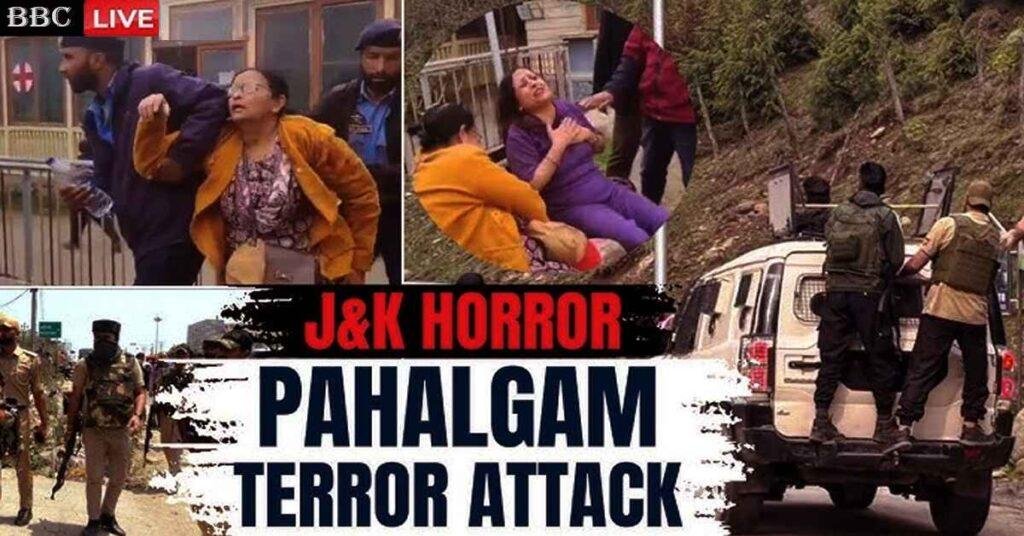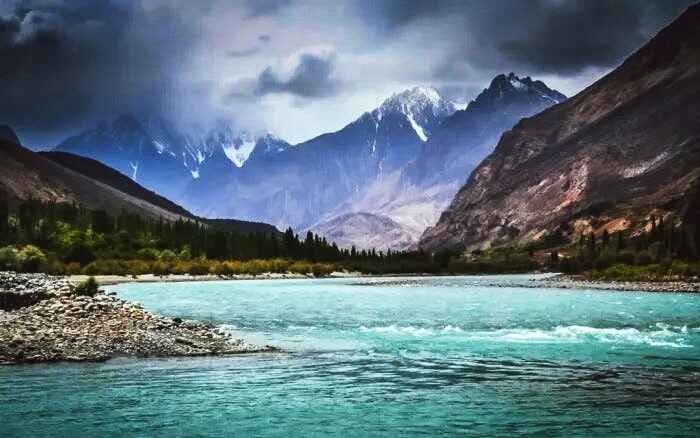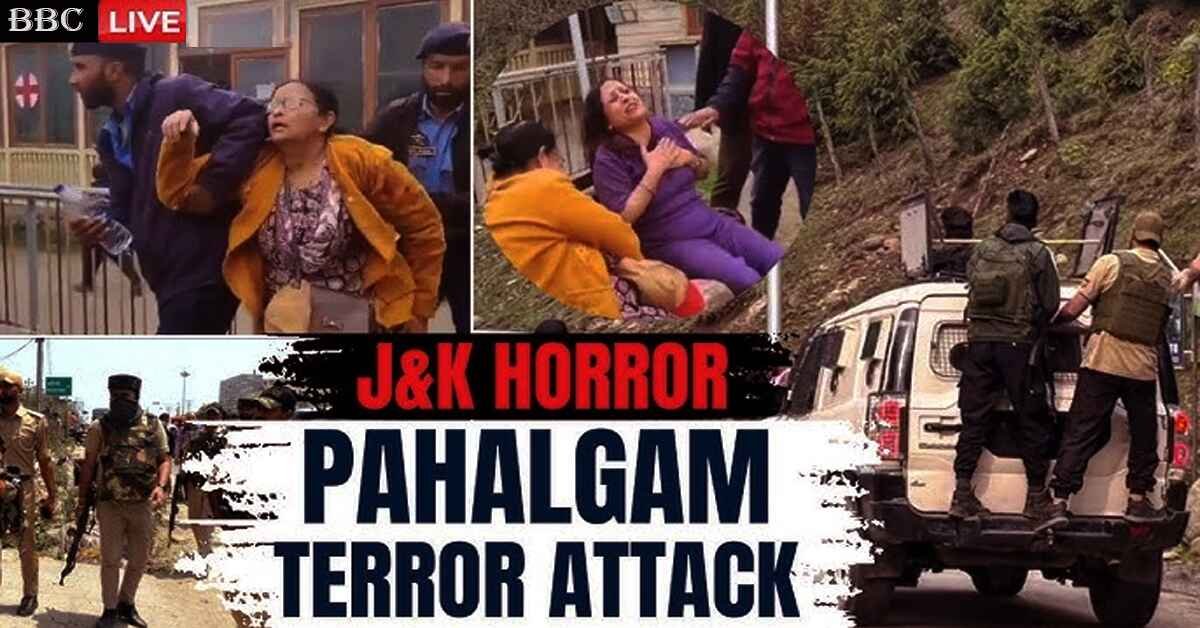Media reports are saying that terrorists came wearing masks in service uniforms. They asked the tourists their names, checked their identity cards, and made them read the Kalma. They even made them vomit and shot those who were not Muslims. Is the attack in Pahalgam, Jammu and Kashmir, a big conspiracy to scare Hindus away from the valley?
Now let us go back 700 years, when the dominance of Islam started increasing in Kashmir. In 1338 AD, the first Muslim dynasty Sahmir, was established in Kashmir and it ruled for 220 years. The most controversial ruler of this dynasty was Sultan Sikandar, who sat on a chariot in 1389 AD. Kashmiri scholar Premnath Bajaj considers his rule to be the biggest black spot in the history of Kashmir. Historian Jonraj writes in Rajtarangini II that Sultan Sikandar was intoxicated with religion. He converted a Brahmin named Sukh Bhatt to Islam and named him Saifuddin. He made him his chief advisor and married his daughter to him. On the suggestion of Saifuddin, he married Sukh Bhatt. Sultan Sikandar ordered the conversion of Brahmins and scholars to Islam. However, when Zainulabdeen, son of Sultan Sikandar, boarded the throne in 1420 AD, he rebuilt the temples and tried to bring back the Brahmins who had left Kashmir. He was against Islamic fundamentalism. Now let us come to the 1990s when Kashmiri Pandits were massacred in Kashmir and were given Khadar. By the end of 1989, hatred against Pandits in the valley became more poisonous. JKLF and Hizbul were leading the violence. Along with them, about two dozen small Islamic organizations were also enemies of the lives of Pandits. Senior journalist and Kashmir tragedy survivor Rahul Pandit writes in his book ‘Moon Has Blue Plot’ that on the night of January 19, 1990, our entire family was at home. Whistles were being blown continuously from the loudspeaker of the mosque. Then a voice came from outside – Narayan Takbir Allahu Akbar, what do we want? Freedom is for the tyrants, infidels, leave our Kashmir. My mother, frightened, pointed a knife towards my sister and said that if he comes, I will kill him and take my own life. Now, the way the terrorists selectively killed people on 22 April 2025, will this become Hindu exodus part 2? On this, former DGP of Jammu and Kashmir Police, SP Ved, says that the attack has been carried out to add colour to the situation that has become normal after the removal of Article 370 from Kashmir. An attempt has been made to take over the business of local people by attracting tourists. Retired Lieutenant General says the entire incident was carried out to show India in a bad light and to create a rift between Hindus and Muslims. The terrorists killed people after asking their names. This says a lot. After the Pahalgam terror attack, there may be a decline in the number of Hindu tourists and workers going to Kashmir. Is the message of the terrorists clear that they do not want to see Hindus in Kashmir, even if they are tourists?
Hindus were shot after asking their names, what is TRF: Non-Muslims are on target, they took responsibility for the Pahalgam attack, the supreme commander is sitting in Pakistan

The firing went on for 10 minutes, after that we saw that the place was filled with blood, we saw a couple of people there and some others were injured, this is the biggest terrorist attack in Kashmir in the last 6 years, more than 40 tourists had come to visit the President Valley of Pahalgam, around 2:00 pm two people came from the side, asked one of them his name, then by pointing said that he is not a Muslim, then the firing continued for 10 minutes, if it continues then it will take at least 30 minutes, that is why after executing the attack in a short time, they left for their safe house and hid in the bushes and ran away somewhere, we talked about the method and ways, Simran who had come to visit from Nagpur tells that we are not able to understand what has happened, then they told that there have been attacks, there was a small gate which they wanted to close on us and run away, we were involved in saving our lives, Kashmiri Nepali and a citizen of Saudi Arabia, they helped us and some other tourists were also there I did not tell that firing was happening from between the huts. Some people were firing bullets from pistols. I hid to save myself. 20 people had come with me, many of them were known. The central government had formed TRS in March 2023 under the UPA. It is considered a proxy organization of Lashkar. TRS came into existence in 2019. Apart from target killings, it has been involved in the smuggling of drugs and weapons. After the removal of Article 370, the activity of TRS is big. According to the former DGP of Jammu and Kashmir Police, Lashkar-e-Taiba is behind the attack. It is operating from Pakistan. Nowadays, 90% of the terrorists in Kashmir are coming from Pakistan. Earlier, there were local militants, so they did not attack tourists. They knew that the business of local people came to a standstill. A big terrorist incident has taken place. It is believed that terrorists are now targeting tourists in Kashmir Valley as well, and in the coming time, big tourists can be their target.
More than 20 tourists died in the Pahalgam Attack. What did America and Israel say
After the terrorist attack on tourists in Pahalgam, Jammu and Kashmir, top leaders from around the world have condemned the attack and expressed solidarity with India. Armed men attacked in the Barren area, about 5 km from Pahalgam, in which more than 20 tourists were killed. Prime Minister Narendra Modi has described this as a terrorist attack and said that those responsible for the attack will not be spared. At present, US Vice President JD (US) is visiting India with his family, and he has expressed condolences to the victims. He wrote on one of his accounts, Usha and I express our condolences to the victims of the devastating terrorist attack in Pahalgam, India. In the last few days, we have been overwhelmed by the beauty of this country and its people. Our condolences and prayers are with them in this terrible attack.
The effect of stopping the Indus Water Treaty has started to show, first drought, then flood. There is chaos on the other side. Is India playing a big game?
It has not even been 5 days since the Indus Water Treaty was suspended, and its effect is being seen. India and Pakistan do not share water data, so on 26 April, when the Jhelum water was suddenly released, some areas of Pakistan were flooded. People were not ready for this, so a water emergency had to be imposed. After suspending the Indus Water Treaty, we will know what is India’s step-by-step plan.

First of all, let us understand why India decided to suspend the Indus Water Treaty. After the Pahalgam terrorist attack, India’s Cabinet Committee on Security implemented 5 five-point action, the most important of which was to suspend the Indus Water Treaty with Pakistan. On 24 April, India’s Prime Minister Mukherjee wrote a letter to Murtaza, Secretary of Pakistan’s Water Resources Ministry, saying that this treaty was made in a good context, but it cannot be maintained without good relations. India was waiting for a long time to remove the shortcomings of the Indus Water Treaty. By stopping the treaty, it is taking advantage of this opportunity, along with responding to the Pahalgam attack. So is India’s decision to suspend the Indus Water Treaty. If the postponement of the treaty is postponed, there will be a drought in Pakistan. The simple answer is no. We do not have that kind of infrastructure to collect or divert water. But even if we have hydropower projects like Kishanganj in Haradam and Neelam, then electricity can be generated from the flow of water. Even if India does not go to Pakistan overnight, India can bring about a shortage or an increase in water in Pakistan by disturbing the flow of water and stopping the information related to it. A three-step plan has been prepared in the long term. India was suffering losses in the Indus Water Treaty. It wanted new conditions in the treaty. Therefore, in the first step, it can force Pakistan to negotiate. Under the treaty, India can use only the water of the eastern rivers. About 94% of the water of these rivers is used by India. The remaining 6% of water goes to Pakistan without being used. To use this saved water, India is building a dam in the second step. In the third step, India will stop Pakistan’s share. According to Union Water Minister CR Patil, this is a long-term project that will go on for years. First, the work of removing the guards from the rivers will be done, then the water supply will be shut down,n and the rest of the infrastructure will be built. Projects will be increased. Work will begin on changing the direction of rivers by building reservoirs to store water. Pakistan will appeal to the World Bank and the United Nations for the Indus Water Treaty, but India has made preparations for that as well. Experts say that under Section 62, India can back out because Pakistan is using terrorist groups against it.
